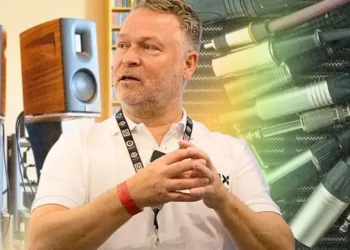Why SACD Was the Biggest Flop in Music Tech History
Great specs, big promises—and still, nobody cared.
Back in 1999, Sony and Philips rolled out the Super Audio CD (SACD), a high-resolution disc format that was supposed to blow CDs out of the water. It offered better sound, surround audio, and a new lease on physical media just as the digital age was heating up.
But for all its lofty goals and technical prowess, SACD flopped. Hard.
Today, it’s barely a footnote in music history—a format audiophiles still discuss, but one most listeners never even heard of. Here’s a breakdown of exactly how such a high-profile format crashed and burned.
1. Most People Didn’t Even Know SACD Existed
Let’s start with the obvious: you can’t adopt something you don’t know about.
Despite backing from industry giants, SACD never got a major marketing push. Outside of a few audiophile magazines and in-store demos, it was practically invisible. If you weren’t already a gearhead, you likely missed it entirely.
Even in record stores, confusion reigned. Some employees would mistakenly direct customers asking for SACDs to the DVD section. And even when SACDs were available, many didn’t clearly mark themselves as anything special—some Rolling Stones SACDs, for example, looked just like regular CDs.
In Japan, SACD had a stronger presence thanks to more consistent support and exclusive titles. But in the U.S. and Europe? Crickets.
2. It Had Too Little Music to Offer
You can’t win people over with great sound if there’s nothing to listen to.
The biggest killer of SACD was its thin catalog. While a few major labels got on board early, most—including Sony’s own music division—pulled back within a few years. By 2009, new releases had all but dried up.
Sure, audiophile labels like Mobile Fidelity and Analogue Productions kept it alive with select classical, jazz, and rock titles—but these niche releases weren’t enough to gain mainstream traction.
In 2012, SACD sales in the U.S. dropped below 100,000 copies—a death knell for a format that was supposed to change the industry.
It created a vicious cycle: few albums meant fewer people buying players, and fewer players meant labels had no reason to release new albums. As one Reddit user put it, unless you loved “dad rock, classical, or Norah Jones,” SACD just didn’t offer enough to justify the price or effort.
3. It Was Too Expensive and Too Complicated
Getting the full SACD experience wasn’t just about buying a disc. You needed special hardware.
Early SACD players were pricey—Sony’s flagship SCD-1 debuted at a wallet-melting $5,000. Even cheaper universal players hovered around $500. And while hybrid SACDs could play in regular CD players, that only gave you the standard CD-quality layer—not the high-res upgrade.
Add in the fact that only a few factories could make these discs at first, and that many systems couldn’t even connect to an external DAC due to copy protection—it was a headache. Even when PlayStation 3 briefly supported SACD, it was more of a fluke than a selling point.
Simply put, SACD demanded too much from casual listeners. For something that promised convenience and superior sound, it delivered neither to the average buyer.
4. Most People Couldn’t Hear the Difference
Here’s the kicker: for all the talk about improved sound, many listeners couldn’t tell.
Numerous blind tests—including a 2016 meta-analysis of 18 studies involving over 400 participants—found that most people couldn’t reliably hear the difference between SACD and regular CDs.
To make matters worse, not all SACDs even used different masters than their CD counterparts. So in some cases, any perceived “improvement” came down to the mastering, not the format.
Yes, audiophiles with high-end gear sometimes noticed better detail or clarity. But for someone listening through a budget setup or a car stereo, it just wasn’t worth the extra $10–$15 per disc.
Surround sound was a neat bonus—but only if you had a full home theater setup, which most people didn’t.
5. It Got Stuck in a Format War
SACD didn’t just launch—it went to war.
At the same time Sony and Philips were pushing SACD, companies like Warner and Panasonic backed DVD-Audio, a rival high-res format. It supported video, digital output, and menus that made more sense for home theaters.
But the competition between SACD and DVD-Audio meant both formats suffered. With no clear winner and players costing hundreds (or thousands), consumers simply opted out.
By the time either format had a chance to stabilize, digital downloads were already starting to reshape the entire industry.
6. The World Moved On—Fast
SACD hit shelves just as the way people consumed music was changing forever.
Napster exploded around the same time. Suddenly, people could get music for free, instantly. A few years later, the iPod and iTunes revolutionized how we carried and bought music. By 2005, digital downloads were already 6% of music sales—and climbing fast.
The shift wasn’t about sound quality anymore. It was about convenience, portability, and access.
Most people didn’t care about 1-bit DSD sampling rates. They just wanted to take their music anywhere—and for that, a $300 SACD player and a $30 disc didn’t stand a chance.
Today, streaming dominates the market. As of mid-2024, streaming makes up 84% of all U.S. music revenue. People don’t even own music anymore—they just want to hear it, whenever and wherever.
Final Thoughts: Great Tech, Terrible Timing
SACD didn’t fail because it was bad. On paper, it was a brilliant idea—a way to bring better sound to the masses. But in practice, it was expensive, poorly marketed, hard to use, and ultimately out of step with where the music world was headed.
It’s a classic case of good technology launched at the worst possible moment.
The irony? Today, there’s renewed interest in high-resolution audio and physical media—from vinyl to Blu-ray Audio and high-res streaming services. But SACD’s window of opportunity closed long ago.
And if you blinked, you probably missed it entirely.
This article was rewritten by JournosNews.com based on verified reporting from trusted sources. The content has been independently reviewed, fact-checked, and edited for accuracy, neutrality, tone, and global readability in accordance with Google News and AdSense standards.
All opinions, quotes, or statements from contributors, experts, or sourced organizations do not necessarily reflect the views of JournosNews.com. JournosNews.com maintains full editorial independence from any external funders, sponsors, or organizations.
Stay informed with JournosNews.com — your trusted source for verified global reporting and in-depth analysis. Follow us on Google News, BlueSky, and X for real-time updates.












